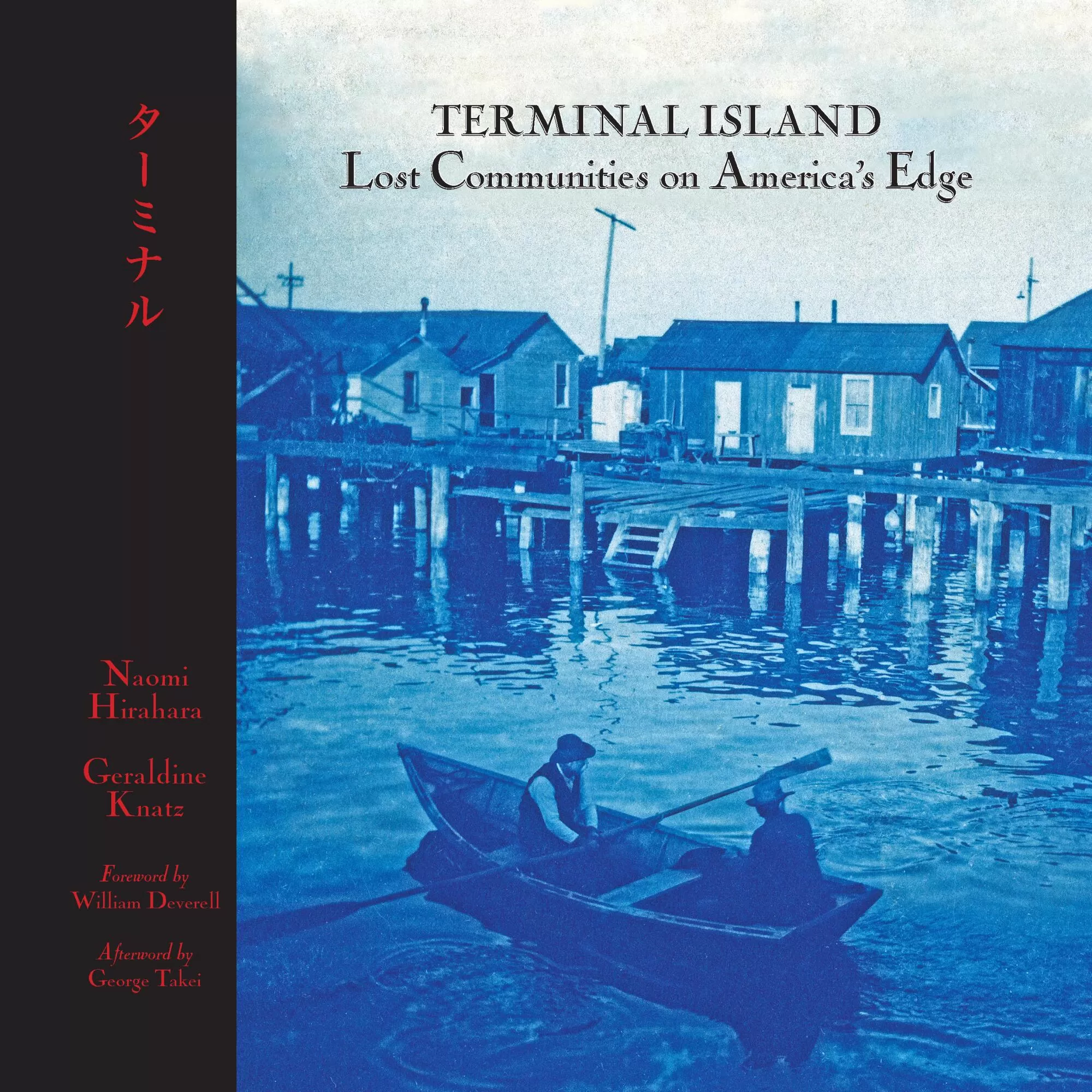On the Shelf
Terminal Island: Lost Communities on America’s Edge
Naomi Hirahara and Geraldine Knatz
Foreword by William Deverell
Afterword by George Takei
Angel City Press: 288 pages, $50
If you buy books linked on our site, The Times may earn a commission from Bookshop.org, whose fees support independent bookstores.
As executive director of the Port of Los Angeles in 2011, Geraldine Knatz went with harbor commissioners on an unexpected field trip: They joined Min Tonai, an elder statesman in L.A.’s Japanese American community, to visit a memorial on Terminal Island, where he was born.
On South Seaside Avenue they saw a torii gate like one sees at a Shinto shrine, historical plaques and a bronze pair of Japanese fishermen gazing at Fish Harbor, where their village once stood. Hearing Tonai’s stories about that village — now gone, replaced by the industrial sprawl of the city’s port — was one of the inspirations behind the decision to create “Terminal Island: Lost Communities on America’s Edge,” a book commissioned by the Port of Los Angeles and published last month by Angel City Press.
The book offers a rich record of that community and more. As is true of just about everything in Los Angeles, peeling back the layers of a place leads to unexpected discoveries.
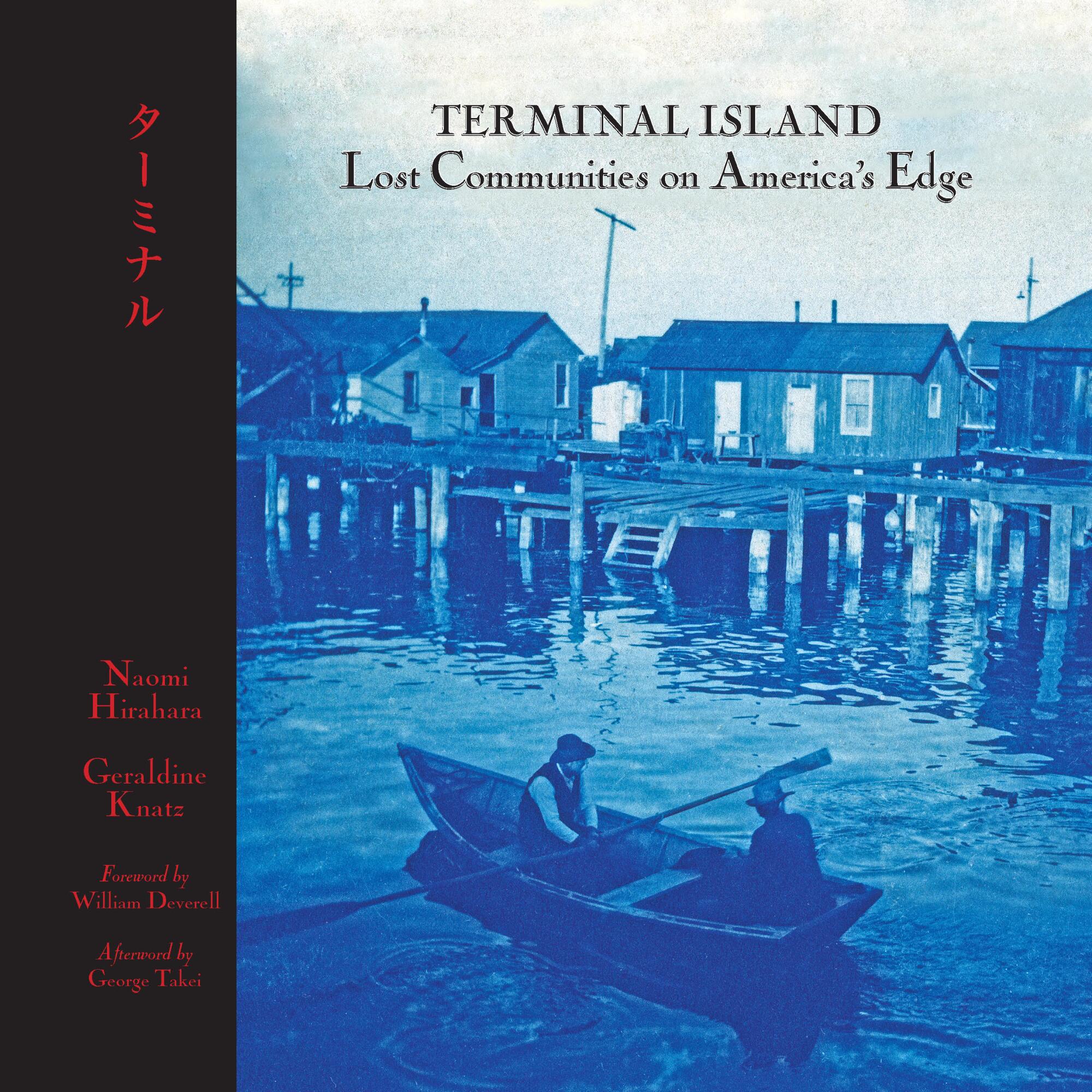
“We wanted to document the Japanese village. That was the impetus,” said Knatz, now a professor at USC’s Sol Price School of Public Policy. “But in the course of research, we discovered so many other communities that had been there before the village too.”
Knatz and co-author Naomi Hirahara present a portrait of Terminal Island’s many hidden histories before its emergence as a major commerce center. Their story is accompanied by a trove of maps, drawings and photos (thanks to the diligence of photo editor J. Eric Lynxwiler) that suggest the area’s cultural vibrancy long before its industrialization.
The original Terminal Island had been nothing more than a glorified sandbar known as Rattlesnake Island, named for the animals that washed into the harbor during heavy rains. It was easy to miss. When Richard Henry Dana sailed along the West Coast in the 1830s and wrote about his experiences in “Two Years Before the Past,” he didn’t notice it. But he did mention Dead Man’s Island, a small conical-shaped land mass once standing at the harbor’s mouth. A place where dead sailors had been buried, the island was dynamited and removed in the early 20th century to widen the harbor and make it more usable for shipping traffic.
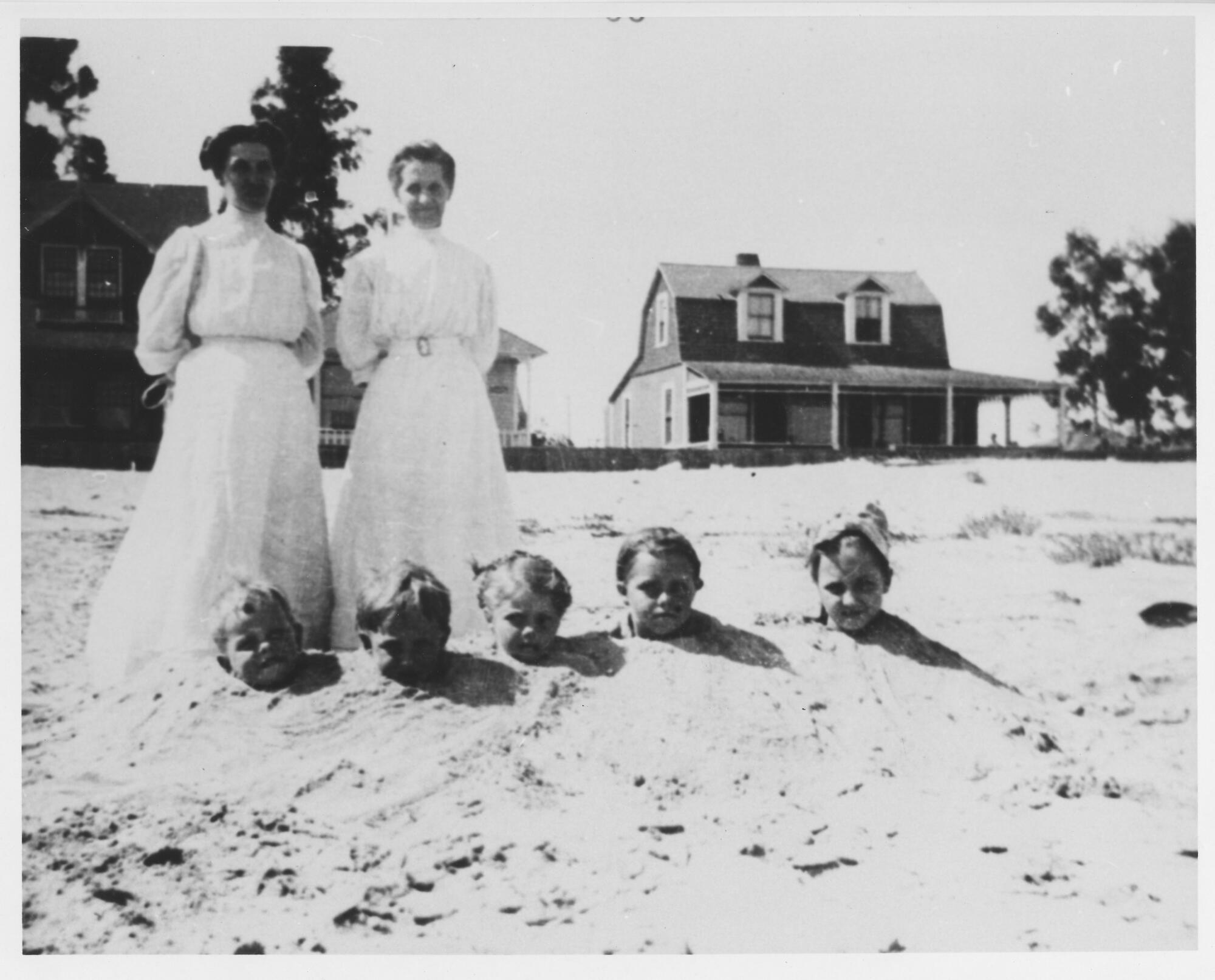
Jennie Merwin, standing at right with an unidentified woman, lived on Terminal Island with her children and husband Frank, who was employed on the government dredge.
(Los Angeles Harbor College Library, Archives and Special Collections via Angel City Press)
From the 1870s until the 1930s, though, that inconspicuous sandbar served as the home of hermits, a squatter’s town, a bohemian artists colony, a resort area with beachfront houses (the tourism trade called it “L.A.’s playground”), canneries (the founder of Chicken of the Sea got his start there) and the Japanese fishing community, which ended when the U.S. entered World War II.
All these communities lived on borrowed time. The towns of East San Pedro, Terminal and Brighton Beach grew through the decades, but the area was always destined for something else.
“It’s clear from letters [from the residents] that they knew Uncle Sam wasn’t creating this harbor just for their shacks and so their kids could play on the beach,” said Knatz, who wrote the chapters about the island’s 19th and early 20th century evolution.
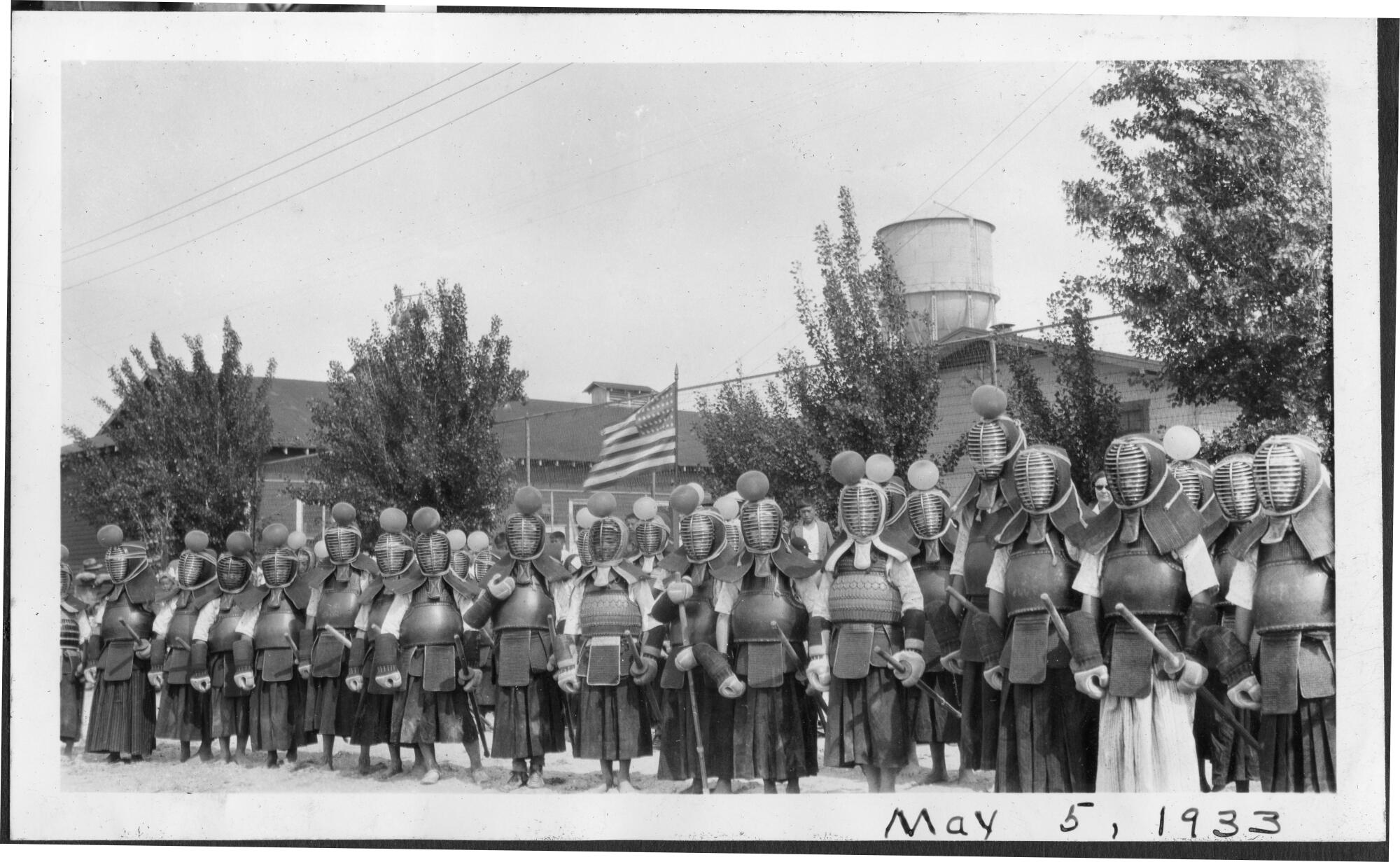
Boys from Terminal Island wear uniforms for the Japanese martial art of kendo in this photo dated 1933.
(Los Angeles Harbor College Library, Archives and Special Collections via Angel City Press)
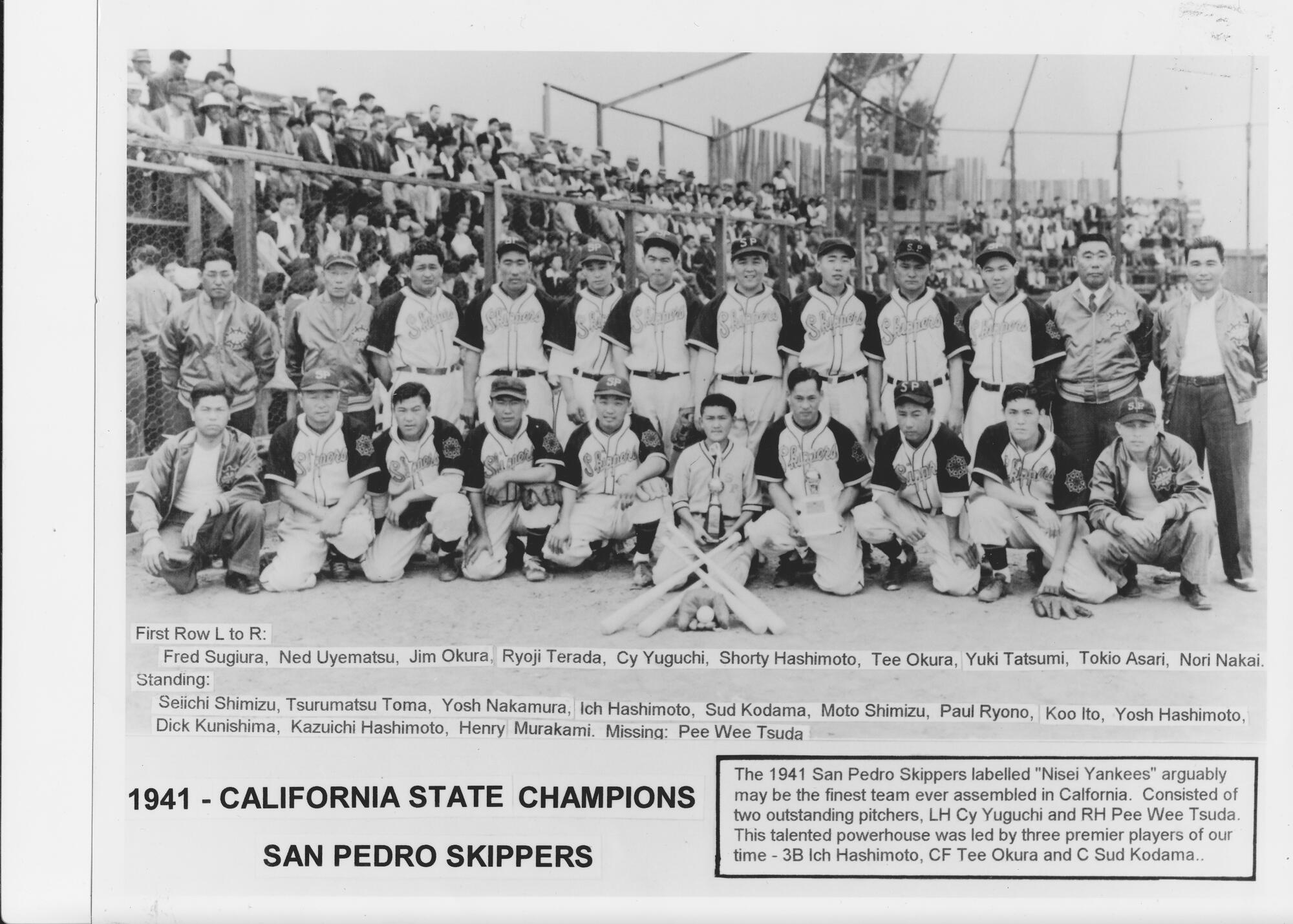
The San Pedro Skippers were a baseball team composed of nisei, second-generation Japanese Americans.
(Mel Tatsumi)
From the mid-1800s the area had been planned as the future site of shipping and the end of a railway line (hence its name) that would transport goods to and from the harbor. Over time the Army Corps of Engineers built jetties and other features that captured sediment and dramatically expanded the island’s size. Maps circa 1906 and 1940 dramatically show the change.
The Japanese village centered on the issei, first-generation immigrants, who were master fishers who left imperial Japan in search of work on the West Coast in the early 1900s. Their presence had a transformative effect on L.A.’s fishing industry. Co-author Hirahara first learned of them as a reporter and editor for Little Tokyo-based newspaper the Rafu Shimpo. In her chapters she depicts an idyllic existence despite the xenophobia that dogged the families.
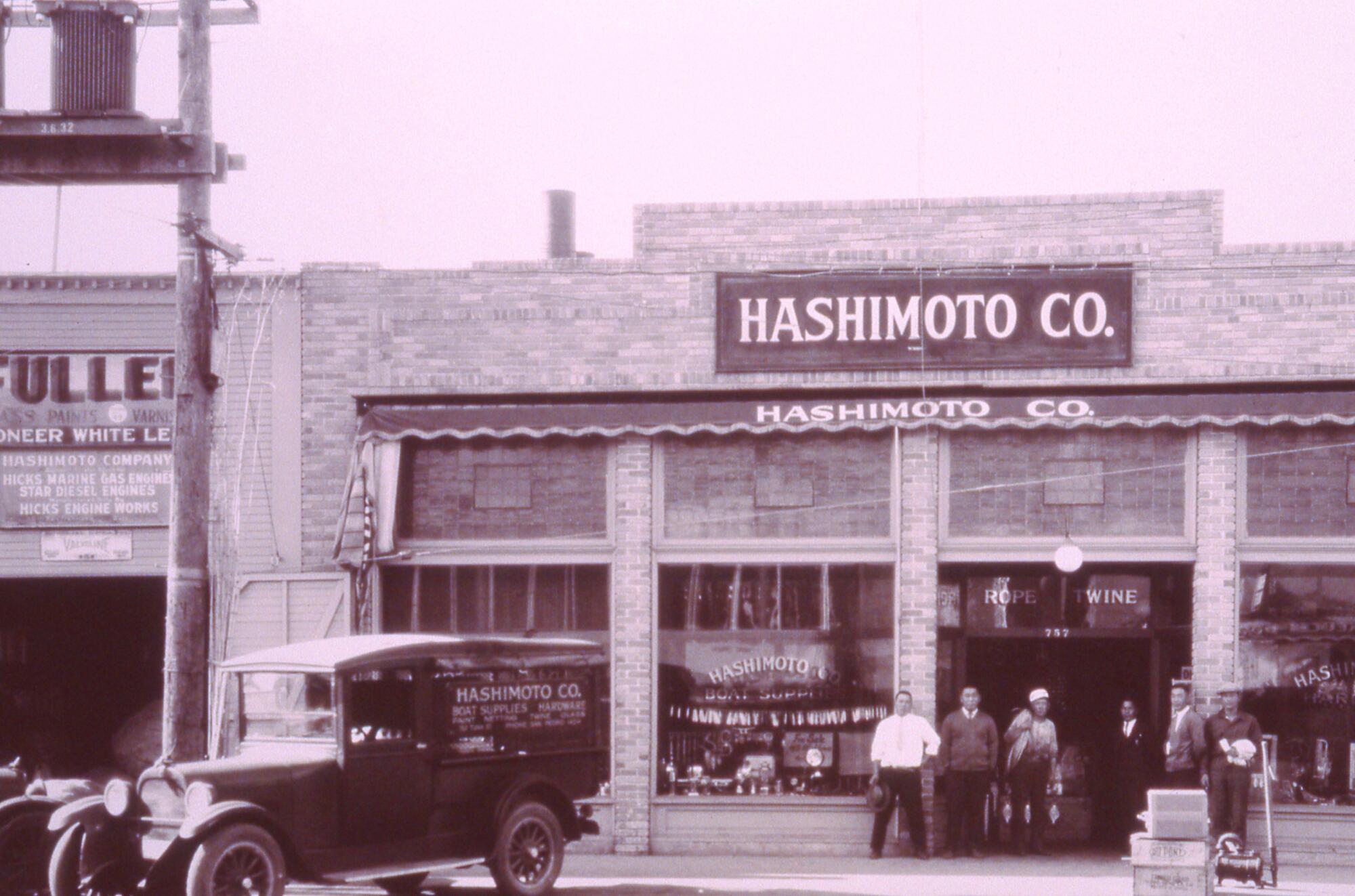
Hashimoto Co. stood at 757 Tuna St. on Terminal Island when the community was home to Japanese Americans.
(San Pedro Bay Historical Society via Angel City Press)
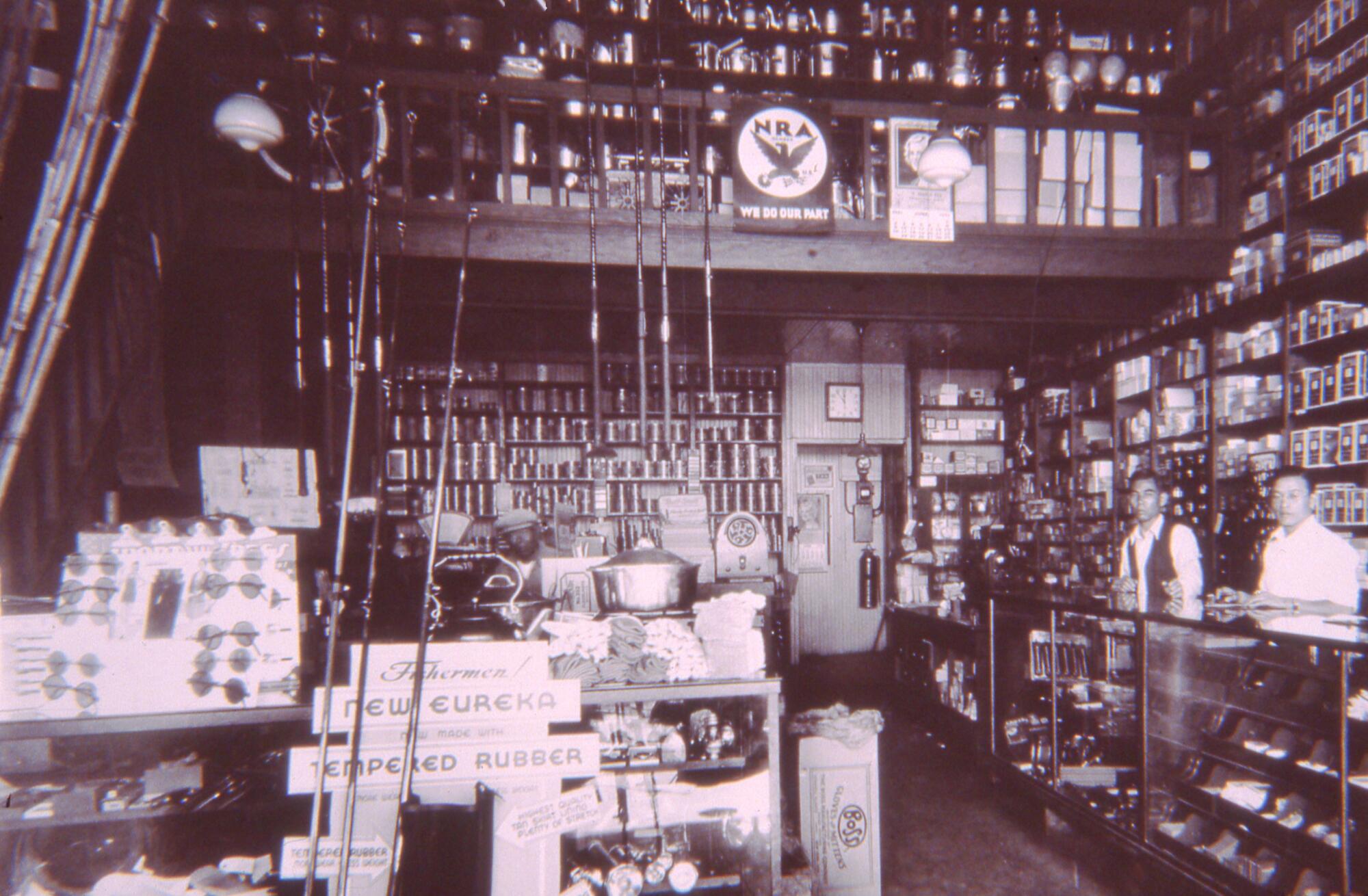
The Hashimoto Co. on Terminal Island sold fishing fear and other goods.
(SPHS)
“It was a very special community that clung together under very harsh political circumstances,” said Hirahara, who supplemented her research with interviews with surviving Terminal Islanders. “It was a community that had each other’s backs.”
Hirahara said that the community understood its precarious place, caught between anti-immigrant protests and the business interests of the cannery owners. She said they were a savvy group that used U.S.-educated advocates like Ki Nasu to lobby for them in Sacramento. Such efforts were helpful until the bombing of Pearl Harbor in 1941. Hirahara chronicles the village’s tragic end in the evictions, deportations and forced removal of many residents to Manzanar and other government incarceration camps for people of Japanese descent, including those who were U.S. citizens.
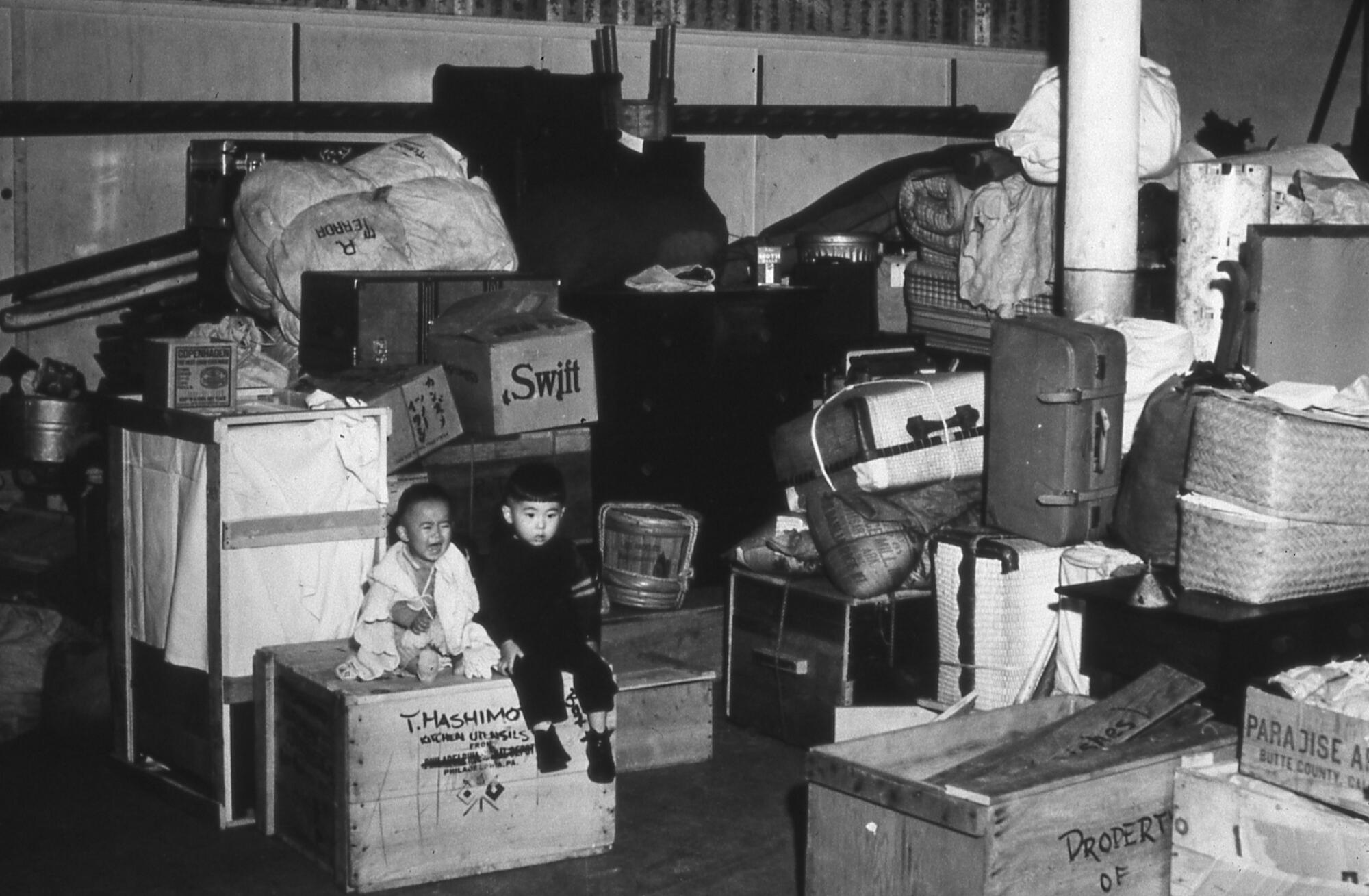
Two children sit atop belongings packed up after families of
Japanese descent were ordered to pack essentials quickly and report for transport to government incarceration camps following the bombing of Pearl Harbor.
(SPHS)
Today, with no communities on Terminal Island except for a low-security prison, the authors hope their book prevents this L.A. history from getting lost — that as the city constantly remakes itself, the colorful stories of the lives that unfolded here do not get paved over too.
Hirahara said she especially hopes the descendants of Fish Harbor’s families “get a good picture of what happened to their parents and grandparents and that it helps them cope with the intergenerational trauma that’s surely there, that couldn’t be fully expressed or disentangled at the time.”
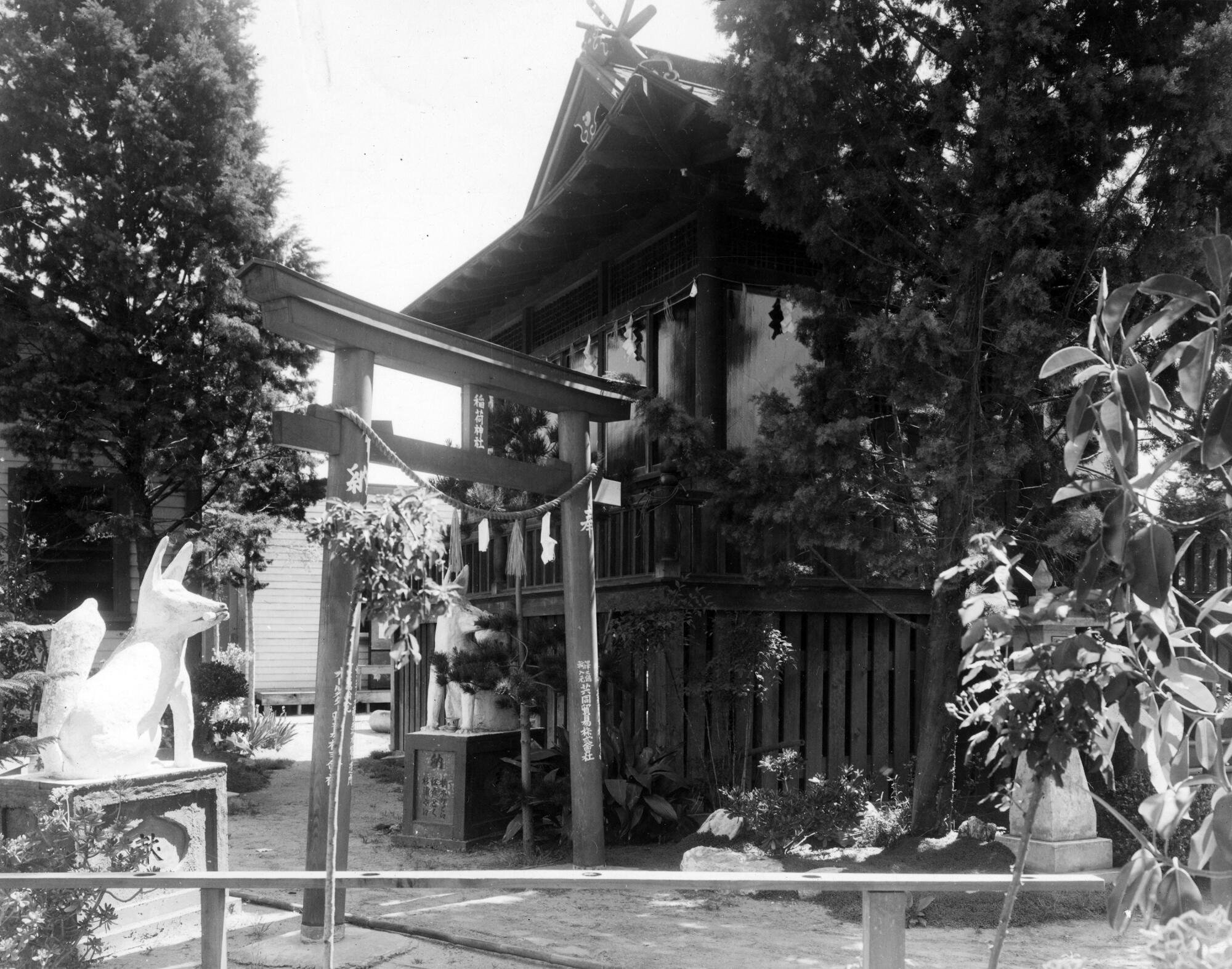
A Shinto shrine on Terminal Island is believed to have been the only one of its kind in the continental United States at the time.
(Los Angeles Public Library)
